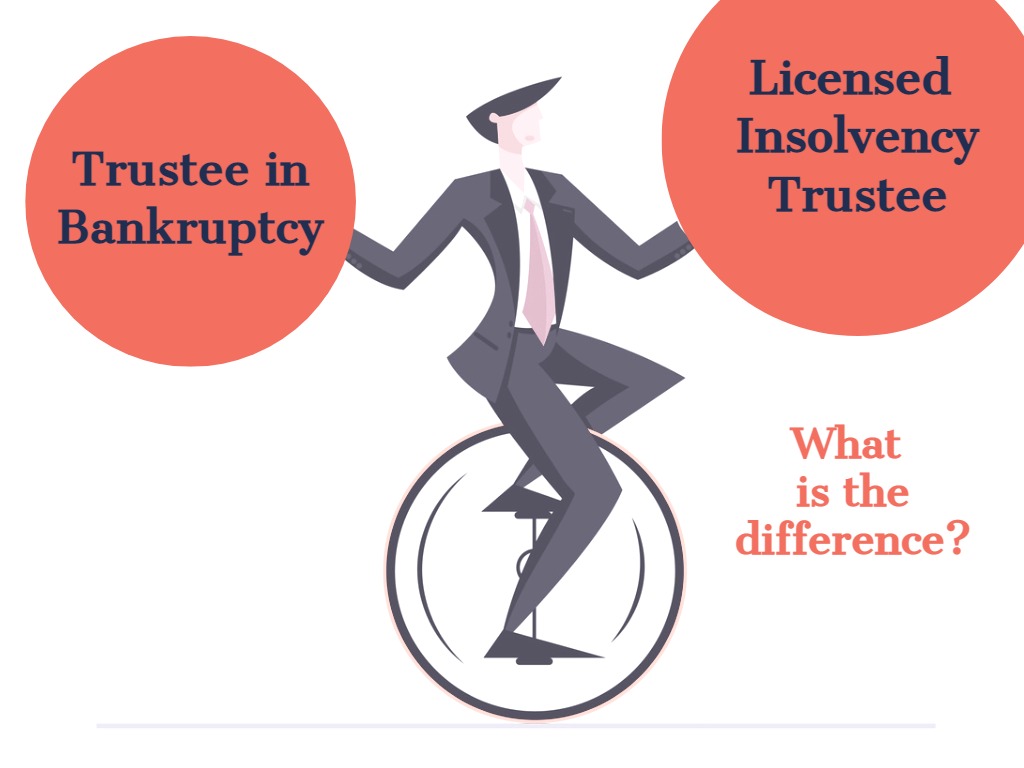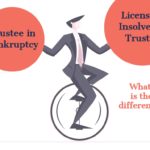

Bankruptcy Trustee vs. Licensed Insolvency Trustee : What’s the Difference?
By Marc Nantel-Legault
Hundreds of Quebecois are looking for debt advice right now. Filing bankruptcy or a consumer proposal is a common experience for Canadians of all ages. Nearly one in five people consider debt relief to solve their financial instability.
When searching for a reputable Bankruptcy Trustee in Montreal, information on a Licensed Insolvency Trustee shows up. This is because a few years ago, the Office of the Superintendent of Bankruptcy Canada changed the official name for trustees. So, what does this mean for the average person seeking a debt advisor?
Read on to learn what bankruptcy is and what the difference between a bankruptcy trustee and a Licensed Insolvency Trustee is. Learn today how to find debt relief that works for every unique situation.
Bankruptcy Trustee Vs. Licensed Insolvency Trustee
In 2016, the government changed the name of Bankruptcy Trustees in Canada. The reason for the formal change in designation was due to the changing nature of debt relief in Canada. With the rise in consumer proposals and other options for debt relief, Trustees offer much more than just handling bankruptcy services .
Trustees also become the source of contact for all creditors. The relationship between the insolvent person and the Trustee legally prevents creditors from garnishing wages or contacting by phone, email, or mail.
The term ‘Bankruptcy Trustee’ previously suggested only one method of debt relief. The new designation of ‘Licensed Insolvency Trustee’ assures Canadians of a multi-service approach to solving debt problems. While bankruptcy is always an option, there are other ways to get out of financial difficulties.
What Is Insolvency?
Being insolvent is when a person is unable to pay their financial obligations to creditors. When debt payments pile up and the income can’t cover the requirements, this is insolvency. Many cases of insolvency get caused by unforeseen financial obligations like medical bills, major family changes such as divorce, or job loss.
There is no need to suffer and get further behind.
Working with a trusted Licensed Insolvency Trustee gets a financial situation back to a healthy starting point. Trustees work with an individual or couple to provide advice and assistance without judgment. But, contacting a Trustee is the first step in getting ahead.
How Does Bankruptcy Work?
Bankruptcy in Canada is a legal debt relief program to clear money owed that a person can no longer manage to pay. The bankruptcy process gets administered by federal law so both the bankrupt party and the creditors stay protected. There are five steps to filing bankruptcy.
1. Debt Advice
The first step to filing a bankruptcy is meeting with a Licensed Insolvency Trustee to explore the financial options. A consumer proposal might be a better route than bankruptcy. The trustee provides unbiased advice on the best debt relief options for an individual’s situation.
2. Paperwork
Collect all documentation that shows the total debts and the total income. Because bankruptcy is federally regulated, important documents must get filed to start the proceedings. The Trustee assists with filling out documents such as the Statement of Affairs, Statement of Revenues and Expenses and Assignment Certificate.
3. Filing Through the Insolvency System
Once all documents are filled out, the Trustee files them and the insolvent person is assigned a file number. An automatic stay of proceedings prevents creditors from contacting you directly. All correspondence must legally go through the Licensed Insolvency Trustee.
4. Debtor’s Requirements
Once the bankruptcy proceedings are filed, there are requirements a debtor must complete. Depending on the amount of revenues, a portion of these may have to be given to the estate. The Trustee reviews the bankrupt’s revenues and payments of a portion of the surplus income.
All people in bankruptcy must complete two financial counselling with their Trustee during the bankruptcy.
5. Completion
Ending bankruptcy requires completing the established duties. The length of the bankruptcy varies for each case. The Trustee provides guidelines at the start of the process.
Start rebuilding your credit as soon as a formal discharge gets granted!
The Popularity of Consumer Proposals
Like bankruptcy, a consumer proposal is a legal process. The Trustee examines the debtor’s income and assets and creates a proposal to the creditors. This proposal is an offer for repayment of a percentage of the total debt.
This process is popular because it allows most debtors to maintain their assets. Debtors are not required to file monthly income reports as well. Two counseling sessions are still required to attend, but the consumer proposal process is usually shorter and more appealing to most debtors.
Once the Trustee files the paperwork with the government, the creditors are legally blocked from contacting the debtor for collection activities. The creditors have 45 days to approve or reject the proposed repayment amount. If a rejection gets raised, a meeting is called to negotiate a successful proposal.
Once the terms of the consumer proposal get completed, the debtor receives a Certificate of Full Performance. Both bankruptcy and consumer proposals stay on credit scores for a period of time. A Trustee provides advice for rebuilding credit and preventing future insolvency issues.
Get Started On Debt Relief Today
No Canadian needs to live with crushing debt. There are debt solutions to take today to get your financial situation started on a healthy path. Working with a trusted debt professional or Licensed Insolvency Trustee at Groupe Nantel gives financial peace of mind.
Feeling ready for financial freedom?
Start with a free, 10-minute pre-consultation phone call. Learn about the documents required to start the debt relief process. Then, schedule an in-person or phone appointment to learn more about moving forward with the debt advisor.
Book Today at Groupe Nantel or call 514-824-1974!






